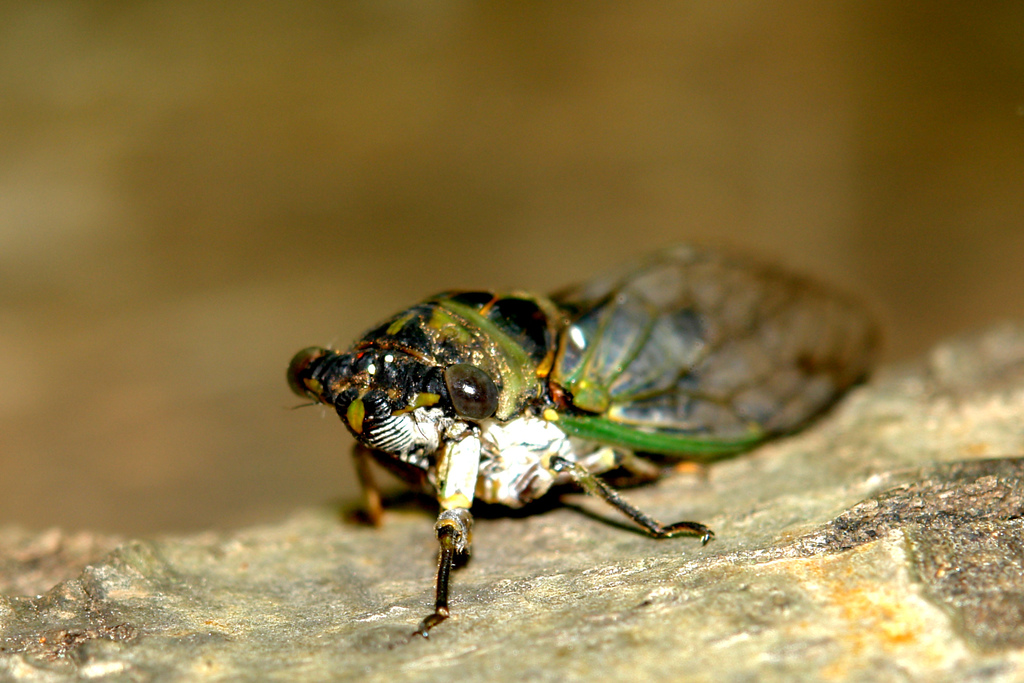
Facts
The Dog-Day Cicada is commonly mistaken as a "locust". Locusts are grasshoppers who have developed extremely efficient jaws used for consuming large amounts of crops. Cicadas do not possess the same mouth parts designed for consuming vast quantities of crops and are not classified with the grasshoppers (Loftin, H., 1953).
Another common misconception of the cicada is that it will sting
or bite. The cicada does not possess any poison sacs such as bees or
wasps that could produce venom. However, the cicada does have a
long, sharp ovipositor that is used as a reproduction structure, but
would not use it as self-defense (Thone,
F., 1929).
Many animals make use of the abundant cicadas as a plentiful food source. Many birds prey on cicadas to feed their young and many snakes and spiders have hunted the insect. Dogs and cats have also dug up cicadas, but have had some problems digesting numerous cicada skins (National Geographic, 2013).
Some broods can be so large that they can span across 15 states (National Geographic, 2013).
Cicadas are considered a delicacy all around the world by many humans and they are low in fat and high in protein. Apparently, the best time to "harvest" them, pun indented, is right after they hatch from their nymph stage because they are still soft and chewy before they dry out and get hard (National Geographic, 2013).
Click here to see amazing pictures the
Dog-day Cicada!
Or
Go back to Home